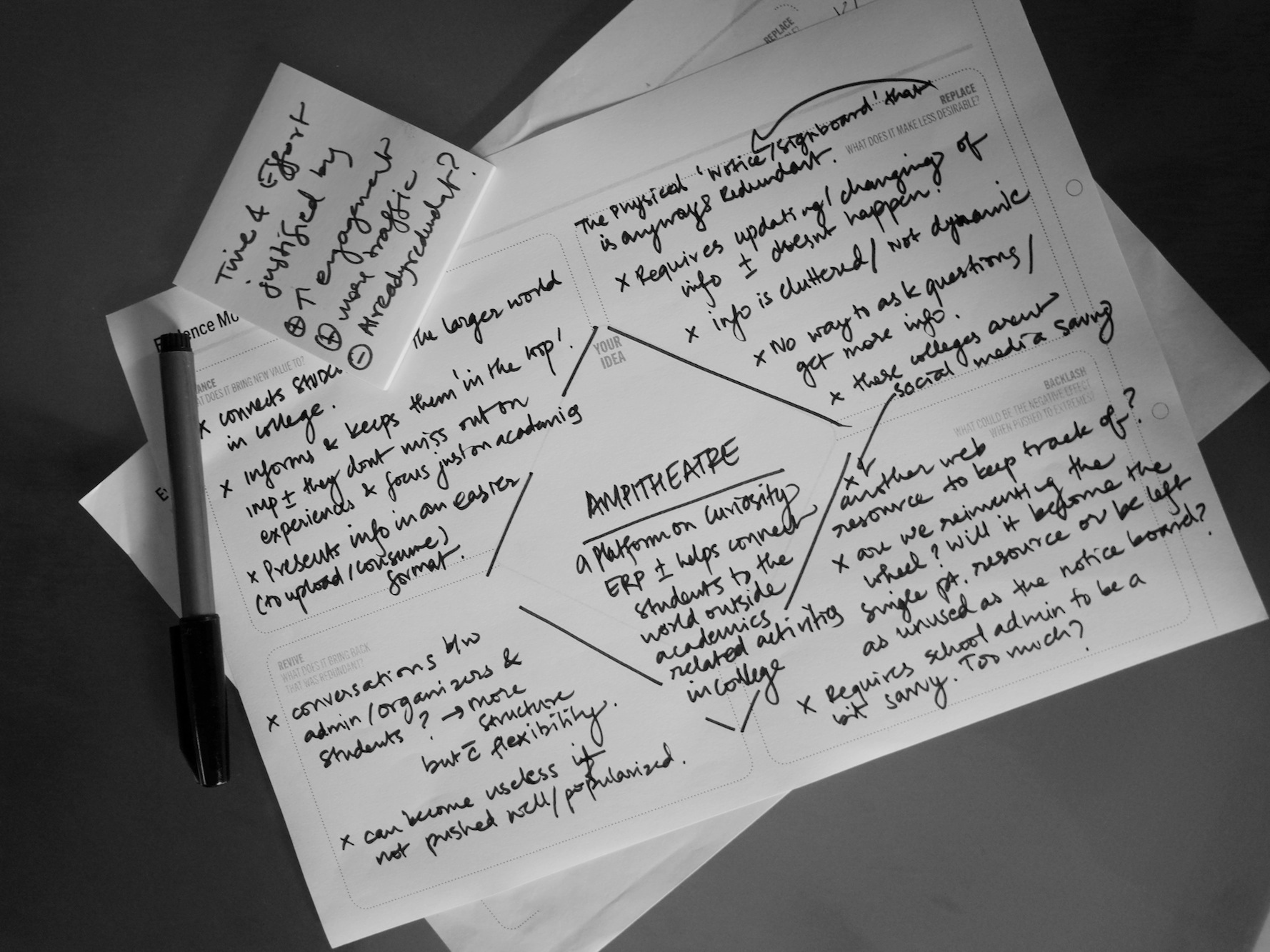
Problem
Teemac works with educational institutions creating products to help them modernise practices through an enterprise resource planning (ERP) platform called Curiosity, that we’ve developed in collaboration with pioneering educators.
We are currently working on a feature called Amphitheater which connects college students to extra curricular activities and events happening in their college. Right now most of the institutions we work with have a ‘age-old’ bulletin board with ad-hoc, outdated information and no one point were students or college admin can access or update information.
Why we used the tool
We have realised that are very idealistic when it comes to building features within the Curiosity platform. We usually follow our gut instinct, even when the institutions do not see an explicit value in them. For a change, we thought we would adopt a more evidence based approach before we start building the Amphitheater feature.
We used a combination of Problem definition and Evidence Planning. This was to both define and create a logical evidence based plan for problem we are trying to solve.
How we used the tool
Two of my team mates and I printed out the worksheets and sat around a table with our notes and thoughts. The Problem Definition tool only helped us articulate what we already knew. The most interesting part was the last question “Can you think of this problem in a different way? Can you reframe it?”. Sometimes you look at a problem and try solve it very linearly, this question helped us deliberate if there was a different way of looking at the problem itself.
The Evidence Planning tool was surprisingly interesting. When we started filling it out, we realised that we weren’t convinced of the evidence backing the solution as well as the impact it could create. .We ended up slightly confused about the direction and found ourselves arguing amongst each other. We haven’t found the answers yet, but its still definitely a positive outcome.
Results of using the tool
This activity made us doubt something that we were absolutely sure of creating. It helped us introspect and rethink an entire system we were going to create based on our intuition. It was a good exercise because it helped us achieve a deeper understanding of what we were trying to do.
Creating a logical evidence based plan to get buy in an institutional platform that connects colleges to its students.